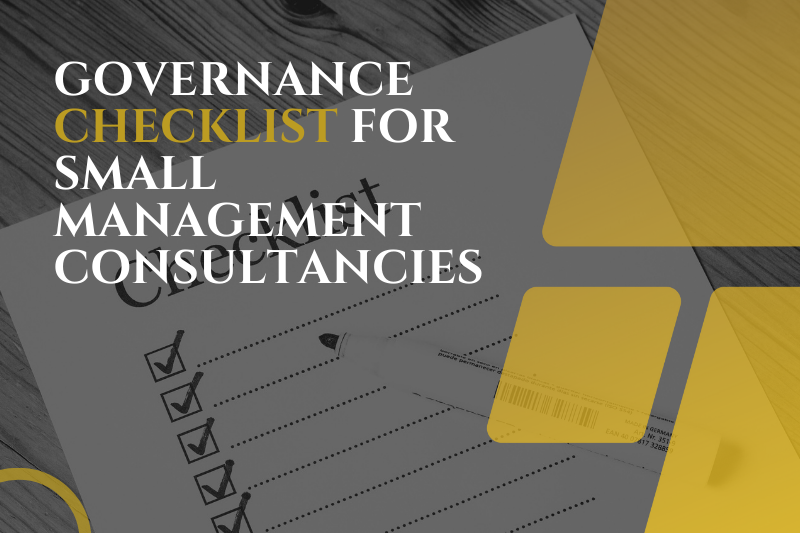Governance concerns the systems of decision-making, control, and accountability, by which the firm is directed and controlled. At its heart is generating trust: for partners, investors, employees, clients and society at large in the stewardship of their asset.

At its most basic, the rules of governance will be documented in the specifications for the legal entity (e.g. certificate of association; certificate of incorporation; and associated national and legal laws), but these are often supplemented by governance documents created by the firm such as Partnership Charters (see below). These will outline the rules for control and decision-making in the firm such as those for voting; quorum meetings; frequency of board meetings; and roles and responsibilities).
Whilst ostensibly boring for some, these details can make or break a firm, especially during times of stress. When things are going well, especially early on, Partners will often be reluctant to discuss the ‘what ifs’ of the future, but as all M&A lawyers have told me – if you wait until times are tough, it is too late.
Key questions for partners might include, what if….
- One of us dies?
- One of us stops contributing to the firm?
- We want to remove a partner who doesn’t want to go?
- We discover a conflict of interest or illegal activity?
- The firm trebles in size?
- We are declared bankrupt?
- We need arbitration due to conflict or deadlock?
The last of these points is more common than many think, especially approaching sale. It is much easier to grow a business with one or more business partners, but the risks are much higher should things go wrong. To this end it is useful to sketch out a charter or agreement which might help in the case of disagreements.
The first port of call here is the company constitution – a legally binding document which will usually detail how decisions are made. This needs reviewing when a firm changes or a new partner comes onboard.
Beyond the constitution or articles, a charter is (usually) a voluntary agreement aimed at clarifying expectations and anticipating responses to different scenarios.

Things that are often in the charter include:
- How much cash should be kept ‘in the bank’ for a buffer?
- What metrics should be used to trigger an expansion?
- What will the tiggers for exit be?
- What happens if one Partner wants to exit early?
- What will happen to the firm on exit?
- What guidance should be in place concerning debt?
- Who will take over the CEO position when the current one leaves?
- What happens in the case of conflict or disagreement between partners?
Of course, there will be conflicts as the firm grows, but a clear charter and well communicated expectations will minimise the opportunities for such disagreements to undo all the great work that has occurred.
Join the Boutique Leaders Club here for monthly masterminds and exclusive resources designed specifically for CEOs of boutique consultancies. If you would like my help to grow or sell your consultancy, please book a one-on-one slot here…↴↴
Get Your Appointment





